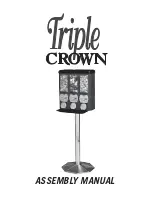Janome 2030DC, Instruction Book
The Janome 2030DC Instruction Book is a comprehensive manual that provides detailed guidance for using the Janome 2030DC sewing machine. You can easily download this user manual for free from our website, ensuring you have all the information needed to maximize your sewing experience.

















